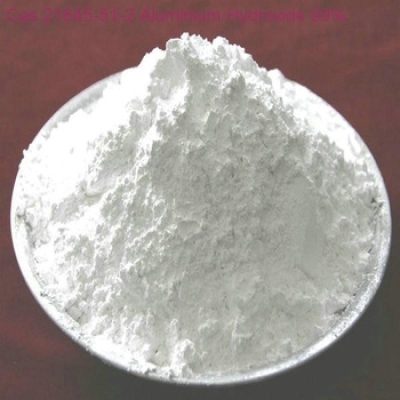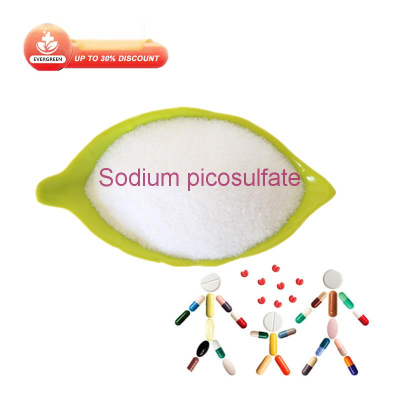-
Categories
-
Pharmaceutical Intermediates
-
Active Pharmaceutical Ingredients
-
Food Additives
- Industrial Coatings
- Agrochemicals
- Dyes and Pigments
- Surfactant
- Flavors and Fragrances
- Chemical Reagents
- Catalyst and Auxiliary
- Natural Products
- Inorganic Chemistry
-
Organic Chemistry
-
Biochemical Engineering
- Analytical Chemistry
- Cosmetic Ingredient
-
Pharmaceutical Intermediates
Promotion
ECHEMI Mall
Wholesale
Weekly Price
Exhibition
News
-
Trade Service
Introduction This study shows that in the 17 years after Helicobacter pylori eradication (HPE), the atrophy of the patient's gastric antrum and greater curvature of the stomach has been significantly improved, but intestinal metaplasia (IM) has not been significantly improved.
The degree of IM in men is significantly more serious than that in women.
Improving atrophic gastritis and IM can reduce the risk of gastric cancer (GC), but whether HPE can improve atrophic gastritis and IM is still controversial.
In this context, scholars from the Department of Gastroenterology and the Department of Welfare and Health Sciences of the Faculty of Medicine, Oita University, Japan conducted a study to observe changes in the gastric mucosa of patients after HPE for 17 years and compare the differences between different genders.
To assess the efficacy of HPE.
Study introduction A total of 172 patients receiving HPE (94 males and 78 females) were enrolled, and histological evaluation was performed annually for 17 years.
The new Sydney system was used to evaluate the grading of gastric antrum and body monocytes, neutrophils, atrophy and IM.
Research results 1.
Gastric mucosa: Atrophy score was significantly reduced, IM had no significant change.
Compared with before HPE, patients with gastric antrum (1.
50±0.
75 vs.
1.
21±1.
25, P <0.
01) and body (0.
59±0.
75) 1 year after HPE vs.
0.
18±0.
52, P <0.
05) the atrophy score decreased significantly, and the atrophy scores of the two parts had a decreasing trend in the first 10 years after HPE, and remained stable thereafter (Figure 1).
Figure 1 Comparison of changes in gastric antrum and gastric corpus atrophy scores before and after HPE (mean ± standard deviation) **P <0.
01 Biopsy showed that the IM of gastric antrum and gastric corpus did not change significantly during the 17 years after HPE.
2.
Male vs.
female: There is no significant difference in atrophy score.
The IM score of males is significantly higher than that of females.
There is no significant difference in atrophy scores between males and females.The IM scores of the gastric antrum (0.
67±0.
94 vs.
0.
44±0.
77, P = 0.
003) and the gastric body (0.
20±0.
62 vs.
0.
047±0.
21, P = 0.
0027) before HPE were significantly higher in men than in women.
Despite the overall fluctuations, the IM scores of the antrum and gastric corpus were still significantly higher in men at most time points after HPE (Figure 2).
Figure 2 (a) Gender difference in IM scores between (a) antrum and (b) greater curvature of the stomach (mean ± standard deviation) ** Compared with women, P <0.
01 Conclusion This study observed that in the 17 years after HPE , The shrinkage has been significantly improved, but IM has no significant improvement.
The degree of IM in men is significantly more serious than that in women, which may lead to gender differences in the risk of GC.
It is necessary to evaluate more subjects to clarify the degree of improvement in IM.
Even in men with severe IM, inflammation and atrophy after HPE are also improved, indicating that HPE helps to inhibit the occurrence of GC.
However, there are still GC risks after HPE, which may be related to the difficulty of improving IM.
Therefore, although HPE is useful, it is of great significance to conduct detailed follow-up observations based on gender differences in gastric mucosal changes after HPE.
Literature index: Kodama M, Okimoto T, Mizukami K, et al.
Gastric mucosal changes, and sex differences therein, after Helicobacter pylori eradication: a long-term prospective follow-up study[J].
J Gastroenterol Hepatol.
2021 Mar 3.
The degree of IM in men is significantly more serious than that in women.
Improving atrophic gastritis and IM can reduce the risk of gastric cancer (GC), but whether HPE can improve atrophic gastritis and IM is still controversial.
In this context, scholars from the Department of Gastroenterology and the Department of Welfare and Health Sciences of the Faculty of Medicine, Oita University, Japan conducted a study to observe changes in the gastric mucosa of patients after HPE for 17 years and compare the differences between different genders.
To assess the efficacy of HPE.
Study introduction A total of 172 patients receiving HPE (94 males and 78 females) were enrolled, and histological evaluation was performed annually for 17 years.
The new Sydney system was used to evaluate the grading of gastric antrum and body monocytes, neutrophils, atrophy and IM.
Research results 1.
Gastric mucosa: Atrophy score was significantly reduced, IM had no significant change.
Compared with before HPE, patients with gastric antrum (1.
50±0.
75 vs.
1.
21±1.
25, P <0.
01) and body (0.
59±0.
75) 1 year after HPE vs.
0.
18±0.
52, P <0.
05) the atrophy score decreased significantly, and the atrophy scores of the two parts had a decreasing trend in the first 10 years after HPE, and remained stable thereafter (Figure 1).
Figure 1 Comparison of changes in gastric antrum and gastric corpus atrophy scores before and after HPE (mean ± standard deviation) **P <0.
01 Biopsy showed that the IM of gastric antrum and gastric corpus did not change significantly during the 17 years after HPE.
2.
Male vs.
female: There is no significant difference in atrophy score.
The IM score of males is significantly higher than that of females.
There is no significant difference in atrophy scores between males and females.The IM scores of the gastric antrum (0.
67±0.
94 vs.
0.
44±0.
77, P = 0.
003) and the gastric body (0.
20±0.
62 vs.
0.
047±0.
21, P = 0.
0027) before HPE were significantly higher in men than in women.
Despite the overall fluctuations, the IM scores of the antrum and gastric corpus were still significantly higher in men at most time points after HPE (Figure 2).
Figure 2 (a) Gender difference in IM scores between (a) antrum and (b) greater curvature of the stomach (mean ± standard deviation) ** Compared with women, P <0.
01 Conclusion This study observed that in the 17 years after HPE , The shrinkage has been significantly improved, but IM has no significant improvement.
The degree of IM in men is significantly more serious than that in women, which may lead to gender differences in the risk of GC.
It is necessary to evaluate more subjects to clarify the degree of improvement in IM.
Even in men with severe IM, inflammation and atrophy after HPE are also improved, indicating that HPE helps to inhibit the occurrence of GC.
However, there are still GC risks after HPE, which may be related to the difficulty of improving IM.
Therefore, although HPE is useful, it is of great significance to conduct detailed follow-up observations based on gender differences in gastric mucosal changes after HPE.
Literature index: Kodama M, Okimoto T, Mizukami K, et al.
Gastric mucosal changes, and sex differences therein, after Helicobacter pylori eradication: a long-term prospective follow-up study[J].
J Gastroenterol Hepatol.
2021 Mar 3.







